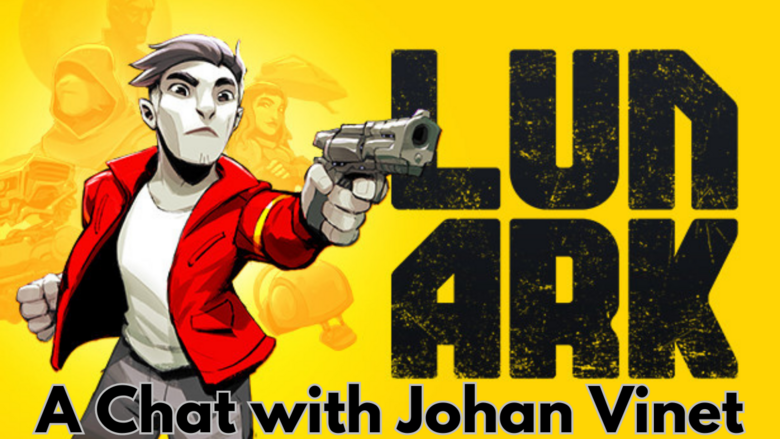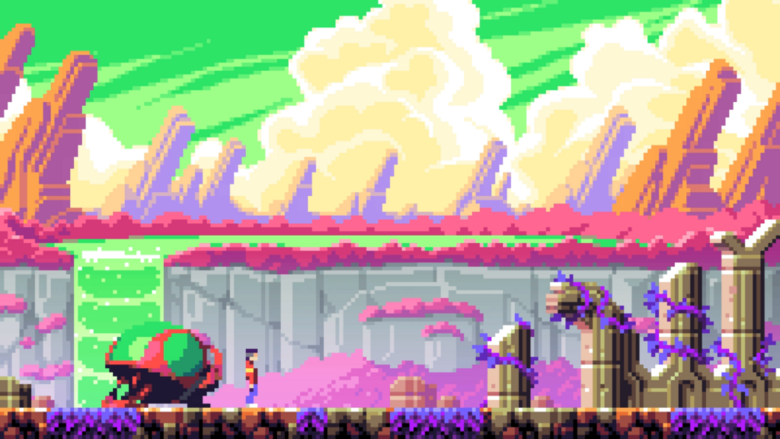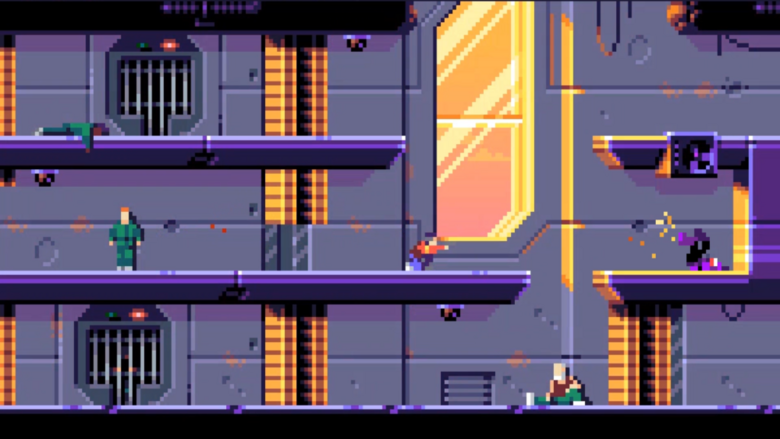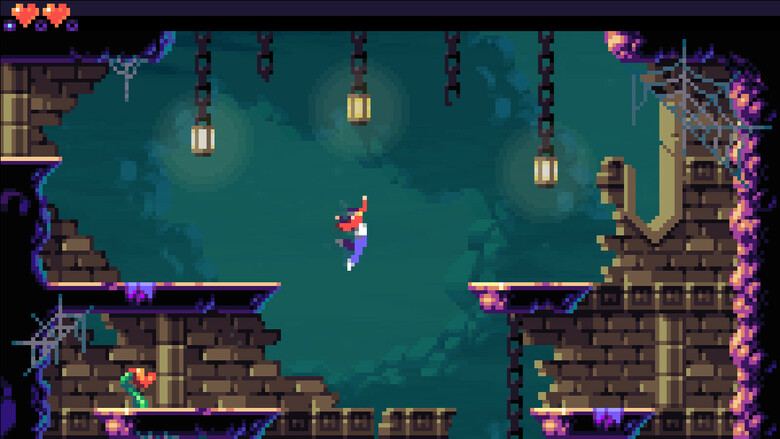If you’ve been closely following GoNintendo over the last 18+ years, you’ve probably picked up on the fact that I love cinematic platformers. Without a doubt, it’s one of my favorite genre, and I’ve played the vast majority of games that fall into the category. It’s hard for me to put my finger on why exactly I love the genre so much, but it spoke to me ever since I played Out of This World/Another World, and I’ve been a rabid fan ever since.
This is exactly why I was chomping at the bit to play LUNARK, the latest title to plant itself firmly under the cinematic platforming umbrella. I’ve already offered my final thoughts on the game in our review, but I was also lucky enough to virtually chat with Johan Vinet, creator of LUNARK, to get some insight into his appreciation for the genre and the work that went into LUNARK itself. You can see our complete interview below.
It all starts here.
GN: What was the first cinematic platformer you played?
JV: The very first cinematic platformer I discovered was Prince of Persia on the Atari ST, followed closely by Another World (Out of this World). I spent a lot of time going through the dungeons created by Jordan Mechner, and remember sometimes turning on the family computer just to watch the iconic introductory cutscene of Eric Chahi’s work.
GN: What is it about the cinematic platformer genre that you’re so drawn to?
JV: In the early ’90s, these pioneering cinematic platform games were the only video games that made you feel like you were part of a motion picture production. This immersion – brought by the staging, by the realistic animations, and by an often-unforgiving difficulty – significantly increased our personal commitment to the adventure.
GN: If you had to pick a favorite cinematic platformer, which would it be?
JV: That’s exactly like asking me which is my favorite child! Instead of answering I’m going to give out awards: Award for innovation, technical achievement and historical accomplishment: Prince of Persia. Best art direction and writing: Another World. Best game feel: Flashback.
At the time, I would have certainly answered Flashback, but since then, I have learned to also appreciate the works that preceded it and on which it was able to build its success, tastefully combining the best elements of Prince of Persia and Another World. However, among the three games mentioned, I still find that Flashback is the one that has aged the best.
Tactical Espionage Action
GN: What inspired you to take a crack at the cinematic platformer genre yourself?
JV: The creation of LUNARK started from an unfulfilled need to relive the sensations mentioned above in their original form. I did play more recent cinematic platformers, such as Inside (which, for me, is close to perfection); however,I found myself a bit tired of dark and pessimistic settings, so I was looking for an action game with more positive stakes and more colorful visuals. Not finding this gem at the time, I gradually decided that I should try and create a game myself.
GN: In your opinion, what does LUNARK do to separate itself from or improve upon cinematic platformers that came before it?
JV: Well, I know what my intentions were when I created LUNARK and that’s what I can talk about. However, I won’t pretend that I achieved those goals, as that’s for the players to decide.
My first intention was just to contribute in my own way to this genre of cinematic platformers that is dear to me. Then, I took on the delicate mission of modernizing the aspects that seemed to have aged poorly while not betraying what the players nostalgic for the genre expect.
One focus was to assign basic actions such as forward jump and roll to dedicated buttons to eliminate the need for complex thumb movements. To improve the game’s controls, I tried to make them more reactive, which can be difficult in classic cinematic platformers where animations have to end before the next one begins, causing input delay. To overcome this challenge, I reduced the distance between each jump opportunity and made the character turn to face a ledge automatically when climbing up or down in a single, fast animation.
Other control improvements include the ability to shoot without having to draw your weapon beforehand, and making the character instantly re-holster it as soon as you start moving again. When you’re rolling with your gun and hit a wall, the character will automatically turn around, ready to shoot if being chased by an enemy. Also, if you walk towards a cliff, the character will stop and hesitate as a warning if the fall is going to be fatal. Finally, players will have the option to remap their buttons.
I would obviously like LUNARK to reach as many people as possible despite the niche audience it seems to address. Now, the average gamer isn’t especially fond of ultra difficult games like the games of the ’90s were. Or maybe if you have kids or a busy schedule, you probably don’t have the energy and time to devote to a very challenging game. Therefore, the game’s respawn system is very generous and will bring you back relatively close to where you died, with infinite lives. On the other hand, if you stop playing for several days, your autosave will bring you back to the beginning of the level and you won’t be lost not knowing what to do.
Finally, I hope that players will appreciate the rich and colorful universe of the game, as well as the light hearted tone I tried to set.
GN: Can you go into detail on the rotoscoping process and how it was used in LUNARK?
JV: Rotoscoping is a traditional animation technique that involves tracing over live-action footage frame by frame to achieve realistic animations. It has been popularized by the Disney animated classics and was also used by Jordan Mechner for Prince of Persia’s animations and then by several of the cinematic platformers that followed.
As a 2D animator, and in homage to those games, I also decided to utilize the rotoscoping technique to create my cutscenes. To achieve this, I used my smartphone to capture footage of myself performing the actions, which I then edited and refined using software such as Photoshop or After Effects. Still in Photoshop, I then meticulously traced over each frame of the footage at the game’s resolution, adding my own personal touch over it.
Jumping to conclusions.
GN: What was the most challenging aspect of developing LUNARK?
JV: Being an artist at heart, my biggest challenge was programming. Fortunately, I got help from Topher Anselmo who took care of the more sensitive aspects of the game, such as the save system and the menus, so I could concentrate on the gameplay.
Only 10 years ago I never thought I would be credited as a programmer on a commercial video game. Despite the challenge, I found this part of making LUNARK the most rewarding. Basically, I designed LUNARK and its mechanics around my technical skills, continually adapting the scope of the game as those skills evolved. Yes, I had a lot of headaches, but many more epiphanies and feelings of accomplishment.
GN: From start to finish, how long did it take to bring LUNARK together?
JV: If I consider the start of development to be when I was able to work on it full time, it has been four and a half years now. However, the idea germinated about two years before when I was doing mockups to see what Flashback could look like in 128×128 and with 16 colors. One year later I made my first prototype and a few months later I quit my job to start the adventure full time!
GN: Cinematic platforming is my favorite genre, but I do recognize that it’s not the most popular genre out there. What do you think developers can do to woo more people to the genre?
JV: Well, they are indeed rare, but some are already doing a great job! There are also those who have publicly acknowledged the great influence of cinematic platformers on their work, like Fumito Ueda (Team Ico), for example. Concerning the recent heirs of the genre, we have Limbo, the impeccable Inside, the ambitious Sommerville, and the very appealing Planet of Lana. I’m particularly counting on this last one (and to a certain degree on LUNARK) to interest a new generation of players.
GN: Is there any chance LUNARK 2 could come about, or perhaps a brand-new game that sticks with the cinematic platformer approach?
JV: To follow up on my answer to the previous question, I am convinced that there is still a lot to explore in order to make this genre appreciated by a larger audience without compromising it. There are a ton of ideas that I couldn’t explore in LUNARK and that I would like to develop in a potential sequel. So nothing is impossible!
A huge thanks to Johan Vinet for doing the interview, and publisher WayForward for putting it together!
LUNARK is available now on the Switch eShop for $20. You can also pre-order two different physical versions of LUNARK, which are coming from Limited Run Games. You can get a breakdown of each physical release here.









